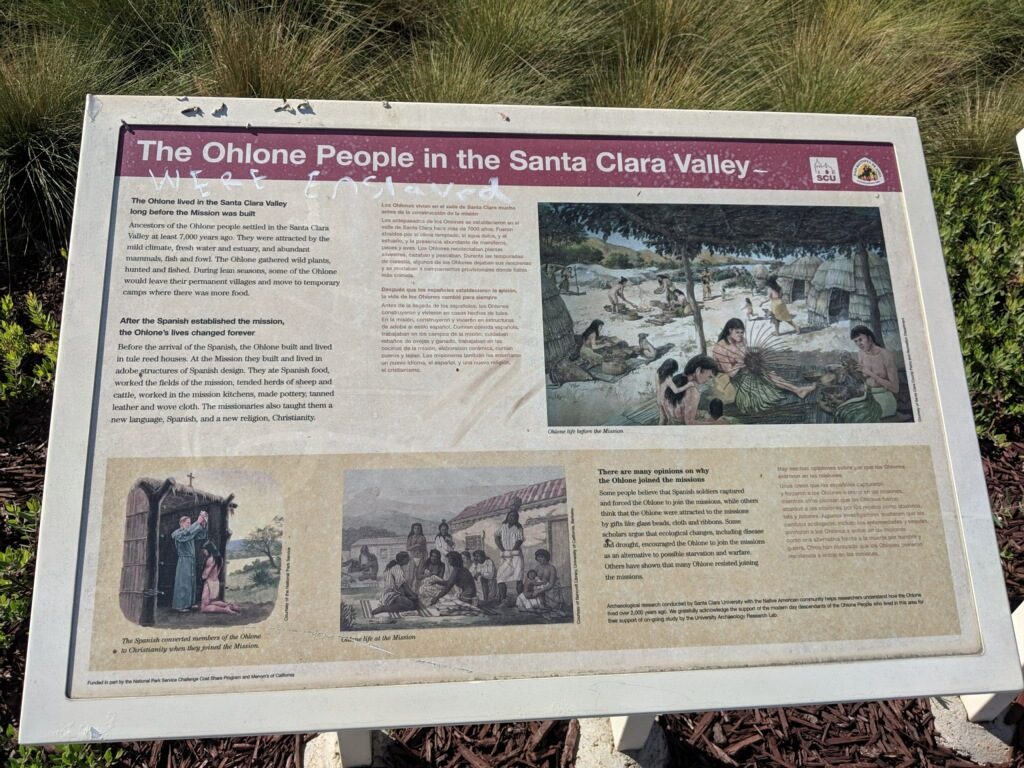“[This course] helped me think about writing in the virtual realm and how to effectively write for audiences. Also, how impactful words and writing can be in the social justice and public realm” -Virtual Santa Clara student, 2019
Course Description

This course explores the difficult history of Mission Santa Clara, which occupied our campus prior to the founding of Santa Clara College in 1851. The particular emphasis will be on archival and archaeological materials associated with the Native Americans who lived and worked here during the colonial period. Students will research historically and culturally significant places, people, and objects on campus and produce multimedia projects for an online gallery about the history and culture of Mission Santa Clara.
Drawing on the disciplinary methods of both anthropology and rhetoric/writing studies, students will critically examine the circulation of historical narratives and commemorative efforts related to this period, examine documentary and archaeological evidence of this time, and rhetorically intervene into the public memory of our area through the composition of digital exhibits representing more just and inclusive histories. By researching histories of our university, students will critically reflect on how we tell “our history”—who is included or excluded? What kinds of evidence is marshaled (or disregarded), and what social and material forces are accounted for in the production and preservation of that evidence? What social/political/material conditions in the present shape our conceptions of our past? What technologies and genres are available to us for re-writing these histories towards more just and equitable ends? Aligned with such similar efforts as the Georgetown Memory Project, we see this course as examining and redressing silences in our historical narratives through engaged student research and writing. Assignments will consider the diversity of the mission period and the challenges of portraying that history outside of an academic context. Classes will include discussion, short lectures, writing and digital studio time, and site visits.
Major Assignments
- Site Images and Critical Analysis: Students will visit a commemorative site on campus or in the surrounding community, capture a 360 image of it, and conduct a critical analysis of the history it represents, including attention to what evidence, figures, experiences are emphasized and which are excluded. Equivalent to 4-5 page analysis.
- 3D Scans and Annotations- Students will select an artifact to 3D scan, and will research and produce informative annotations for that artifact.
- Project Revision for Digital Exhibit- Digital exhibits using either 360 video or 3D scanning to engage public audiences with archaeological artifacts/sites and research-based critical historical narratives. Includes iterative research proposal drafts and research-based assignments throughout course.
- Multimodal Public Memory Project proposal- 2-3 page project proposal for a large-scale public memory project for our campus that uses digital technology (digital mapping, timelines, augmented reality, and/or virtual reality) to engage public audiences with Ohlone history and culture.